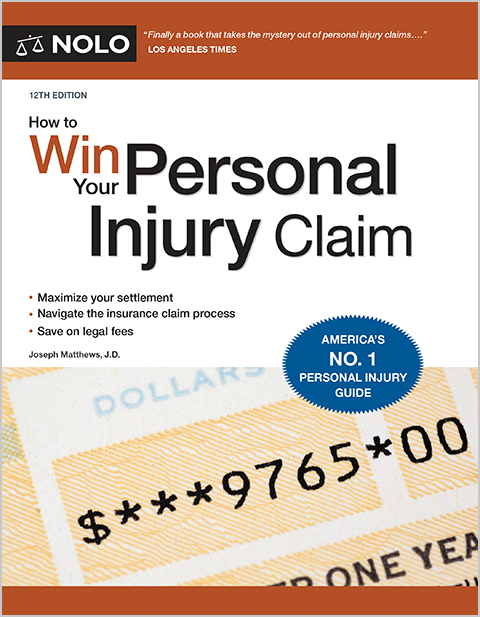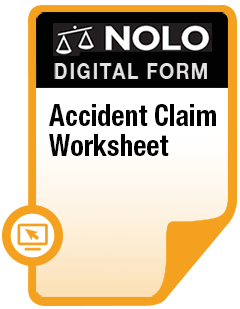Proving liability for a sidewalk slip and fall can be tricky. We explain why, and highlight some special rules that apply when the government might be on the hook.
You slipped or tripped and fall on a public sidewalk. The fall broke your ankle. You're thinking about an insurance claim or a lawsuit. Who's liable—legally responsible—for your injury?
Before you can answer that question, you need to answer this one: Is anyone liable? Keep in mind that, in most personal injury cases, you must prove that whoever caused your injury was negligent, meaning they weren't as careful as they should have been. If there's no negligence, there's probably no liability.
The fact that you fell on a sidewalk, by itself, doesn't mean anyone was negligent. To prove liability, you'll need to show that whoever owned or controlled the sidewalk:
- knew (or should have known) it was dangerous, and
- didn't do anything about it.
In this article, we walk you through the basic liability rules for sidewalk slip and falls.
Negligence and How to Prove It in a Slip-and-Fall Case
To win a slip-and-fall case, you have to show that the property owner was negligent. Let's start with the elements of a slip-and-fall negligence claim. Then we'll talk about some of the evidence you might use to prove those elements.
Elements of a Slip-and-Fall Claim Negligence Claim
In most states, here's what you'll have to show to establish negligence in a slip-and-fall case:
- there was a dangerous condition—like a crack, loose pavement, or maybe an accumulation of sleet, snow, or ice—on the sidewalk
- the party who owned or controlled the sidewalk—we'll call them the landowner—knew of the danger, or would have known if they'd taken reasonable steps to look, and
- despite having a reasonable opportunity to do so, the landowner didn't warn of or fix the dangerous condition.
Sometimes, you also might need to prove that there was no reason for you to have known of the danger. If the condition that caused your fall was "open and obvious," meaning anyone in your position should have seen it, that can be used to defeat your claim or decrease its value.
Evidence to Prove Negligence
As soon as you can after a slip-and-fall accident, you should gather evidence to prove your claim. In particular, take pictures of the accident scene, your clothes, and any bruises or other injuries you suffered. Documenting the scene quickly is crucial. Here's why.
The landowner might fix a broken sidewalk the day after it finds out you fell. If you slip on ice or snow, the condition of the sidewalk can change within minutes—it can melt or be cleared away. You'll find it hard to win a slip-and-fall case without pictures showing what the sidewalk looked like when you fell. Pictures you take after the condition changes won't do you much good.
You should also try to get (and might need a lawyer to obtain) a history of any complaints the landowner received about the dangerous condition. Why is this important? Because it's not enough just to show that the sidewalk was dangerous.
To prove negligence in a slip-and-fall case, you must show that the landowner:
- knew or should have known about the danger, and
- had a fair chance to do something about it.
For example, if the sidewalk was in a dangerous condition for six months, and if the city received a dozen complaints about it, you've got good proof that the landowner knew about the condition and had a reasonable opportunity to fix it.
Who's Liable for a Slip and Fall on a Public Sidewalk?
Liability for a dangerous condition on a public sidewalk depends on several factors. In the simplest terms, these factors often boil down to who's responsible for maintaining the sidewalk. Specific factors can include:
- what your state's law says about maintenance
- whether there's a contract—like a lease, an operating agreement, or a maintenance agreement—that spells out who's responsible for maintaining the property, and
- in some cases, what the landowner's deed or other ownership document says about liability.
For example, in some states, the law says the government must maintain public sidewalks. In others, the law is less clear. When the duty to maintain isn't clear, courts might find that liability rests with the government, the landowner, or maybe someone else.
Special Rules When the Government Might Be Liable
If you're hurt in a slip and fall on a sidewalk the government owns or is responsible for maintaining, most states put important limits on your right to sue. Those limits include:
- notice and time deadlines for bringing a personal injury claim, and
- limits on the compensation (called "damages") you can recover.
Time and Notice Deadlines for Claims Against a City or Town
Most states and local governments require that you notify them of your accident, in writing, and often very quickly after it happens. The notice period can be as short as 30 or 60 days after an injury. Notice requirements tend to be strictly applied. If you mistakenly send your notice to the wrong government department—even if it's next door to the correct one—your injury claim might be denied.
In addition, make sure you notify the correct government. Say you trip on a broken sidewalk adjacent to a city street that goes over a state highway. You give notice only to the city. If state law makes the state highway department and not the city responsible for maintaining roads going over highways, the city won't be liable. If you don't notify the state highway department of your accident within the allotted time, your claim likely will be barred.
Every state has a deadline, called a statute of limitations, on the time for filing slip-and-fall claims in court. As a rule, if you don't file your lawsuit before the statute of limitations expires, your right to sue is forever lost.
In addition to notice requirements, states sometimes shorten the statute of limitations on claims against the government. Statutes of limitations are notoriously difficult to understand. If you're not certain about the time deadline in your case, get advice from a lawyer.
Damage Limits
States usually limit both compensatory and punitive damages in suits against the government. Damage limits differ from one state to the next, and can significantly reduce the value of your slip-and-fall claim. In some states, damage caps can be as low as $100,000. As a rule, punitive damages aren't allowed in a lawsuit against the government.
Get Help With Your Sidewalk Slip-and-Fall Claim
There's a popular belief that slip-and-fall cases are easy to win. Not so. Slip-and-fall cases often are surprisingly complicated. The difficulties are compounded many times over if you're bringing a claim against the government. You'll be up against special rules designed to shield the government from liability. In addition, government lawyers are pros at defeating lawsuits seeking to collect from the public treasury.
You should have expert legal counsel on your side in a sidewalk slip-and-fall case. Here's how to find an experienced attorney in your area.


